
search the site now

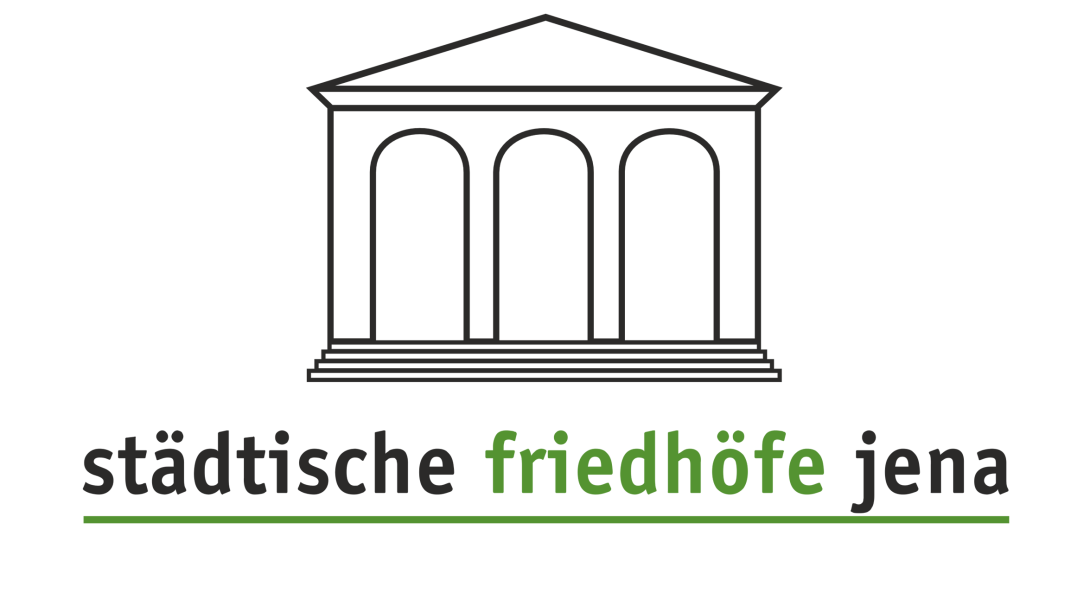
The municipal cemeteries include 21 municipal cemeteries with an area of approx. 25 hectares. Almost all deceased residents of Jena are buried here.
The city's cemeteries are places of remembrance, mourning and reflection. They reflect the cultural history of the region and also provide a refuge for plants and animals.
The main cemetery is the 22-hectare North Cemetery with over 9,000 graves, a cemetery hall and crematorium.
The administration of the municipal cemeteries is also located here.
A ceremony hall for funeral services is available at these cemeteries:
Opening hours
Mon 08:00-12:00, 13:00-15:00
Tue, Wed 08:00-12:00
Thu 08:00-12:00, 13:00-17:00
Fri 08:00-11:00
To avoid waiting times, please make an appointment in advance by telephone.
Today, Jena's North Cemetery is not only one of the most scenic cemeteries in Germany, it is also an important cultural and historical monument. Large parts of the North Cemetery are listed as a garden monument.
Location: Hufelandweg 4
Accessibility by public transportation: Lines 1, 4, 34 stops Nordfriedhof, Scharnhorststraße, line 15 stop Scharnhorststraße
Area of the cemetery: 21.85 ha
Number of gravesites: 9,050
The cemetery administration at the Nordfriedhof cemetery is responsible for registering the death, selecting the grave site and arranging the date for the funeral service and burial. We will be happy to advise you on the design of gravesites and gravestones and provide information on the use of the gravesites.
Further information can be found on the cemetery administration website.
in 1887, the architect Carl Timler designed and built the celebration hall in the neoclassical style. The clinker brick building with limestone and sandstone pillars is still used as a ceremony hall today. It offers space for 75 mourners and is equipped with an organ and sound system.
A ceremony hall with 20 seats is available for smaller mourning parties on the Nordfriehof. In the room for farewells, it is possible to say goodbye to the deceased with an open or closed coffin in the closest family circle. A farewell room is also available for use at weekends or for longer periods.

Maintained graves in hornbeam square
The care graves make it possible to commemorate the dead individually using a convenient service package. The horticultural care of the ground cover over the entire period of use is guaranteed by the municipal cemeteries, as is the production and delivery of the gravestone. This gives you the certainty of a well-kept gravesite for decades. Up to two urns can be buried in the grave. You can also arrange for the necessary renewal and the postscript at the cemetery administration.
Special design regulations apply to the care graves. Only the gravestones specified by the municipal cemeteries may be erected. Borders of any kind are not permitted. The existing planting with ground cover must be maintained.
Grave monument sponsorship
In order to preserve historical gravestones, sponsorships of gravestones worthy of preservation are offered. At the same time, the right of burial is granted for these gravesites. Interested parties can obtain detailed advice on this from the cemetery administration.
Gravesites of honorary citizens and gravesites worthy of protection
There are also numerous graves of honorary citizens and graves worthy of protection in the cemeteries. Maps and explanations are available under 'Downloads'.

The café "C'est la vie"
The café at the North Cemetery is a meeting place for cemetery visitors and mourners. Suitable cultural events and exhibitions also take place here. Coffee, homemade cakes and snacks are served in a cozy atmosphere.
The entrance to the café is located in the parking lot near the ceremony hall.
You are welcome to reserve seats for the funeral party.
Café "C'est la vie"
Am Nordfriedhof 2
07743 Jena
Operator: Mrs. Doreen Hornbogen
Phone: 0160 8348712
Web: cafecestlavie.wordpress.com (external link)

Flower store "Vergissmeinnicht"
Hufelandweg 4 (at the northern cemetery)
Owner: Mrs. Maria Gueinzius
Phone: (03641) 9284115
Web: www.blumenladen-vergissmeinnicht.de (external link)
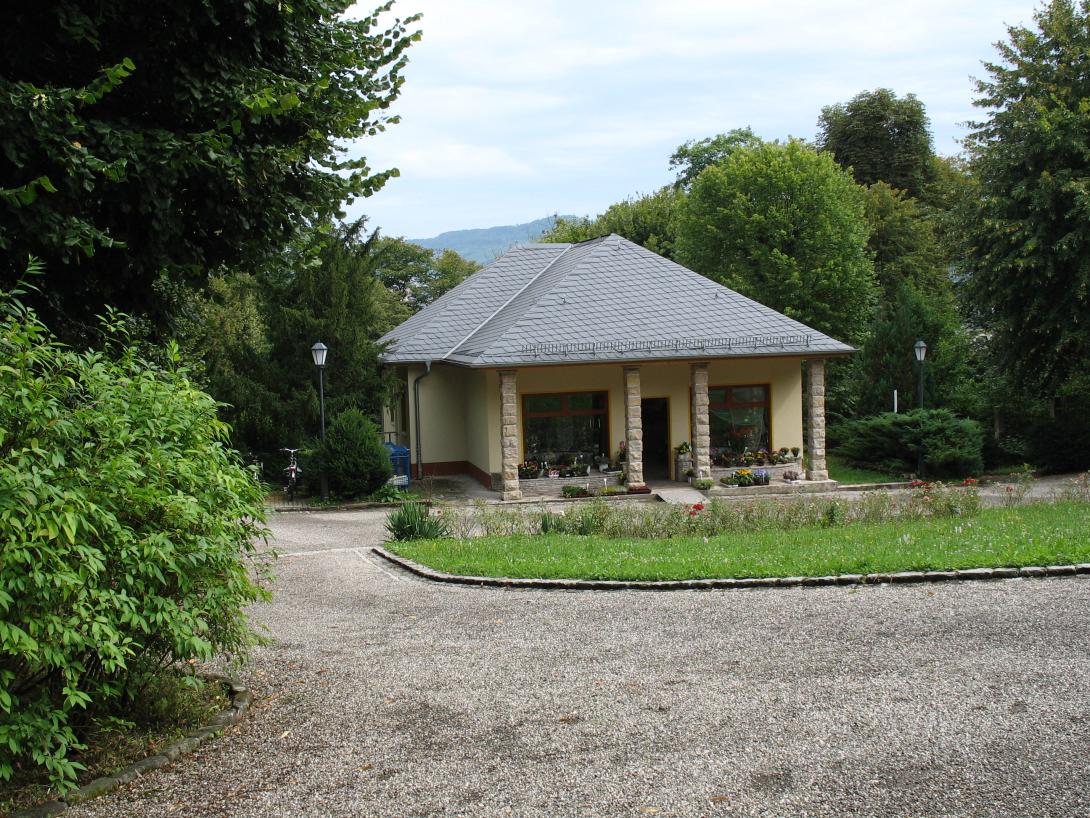
The North Cemetery is home to the crematorium for the deceased from the city of Jena and the region, which was rebuilt in 2016.
Cremation is possible just 2 to 3 days after death.
Further information can be found on the 'Crematorium' website.
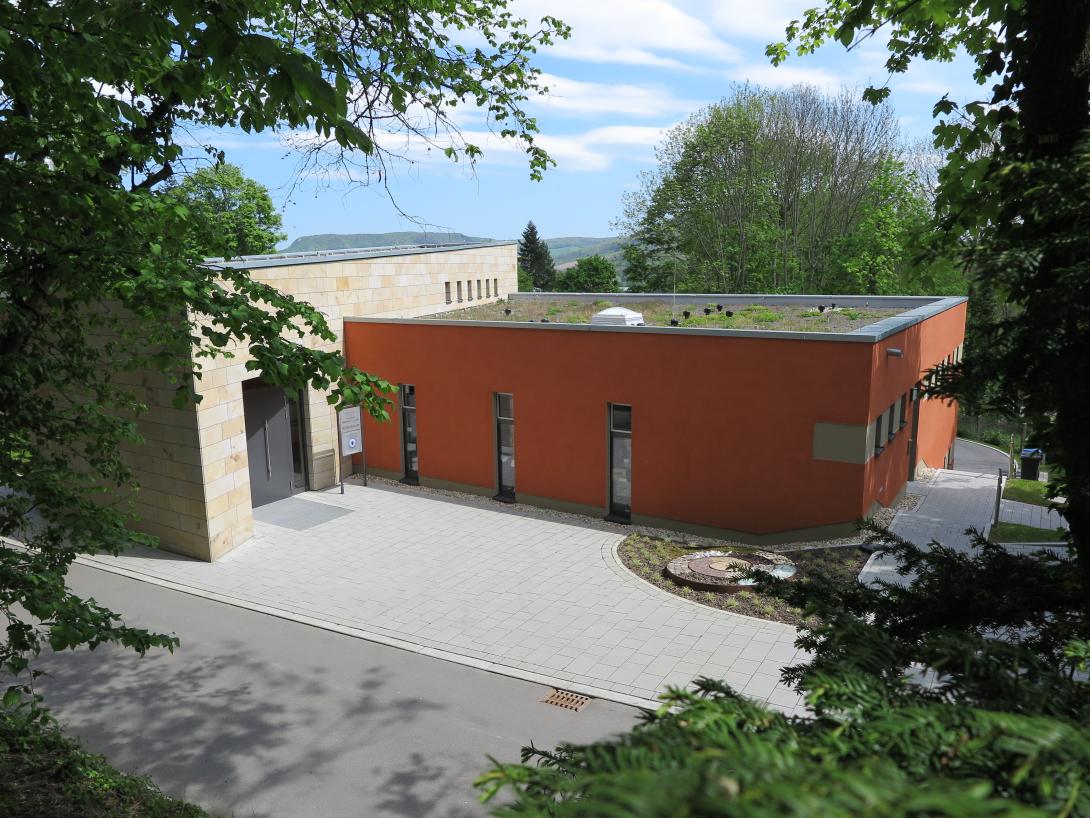
Chronology of the Jena North Cemetery
| 1. February to March 15 | 07:00 to 18:00 |
| 16. March through September 30 | 07:00 to 20:00 |
| 1. October to October 31 | 07:00 to 18:00 |
| 1. November through January 31 | 07:00 to 17:00 |
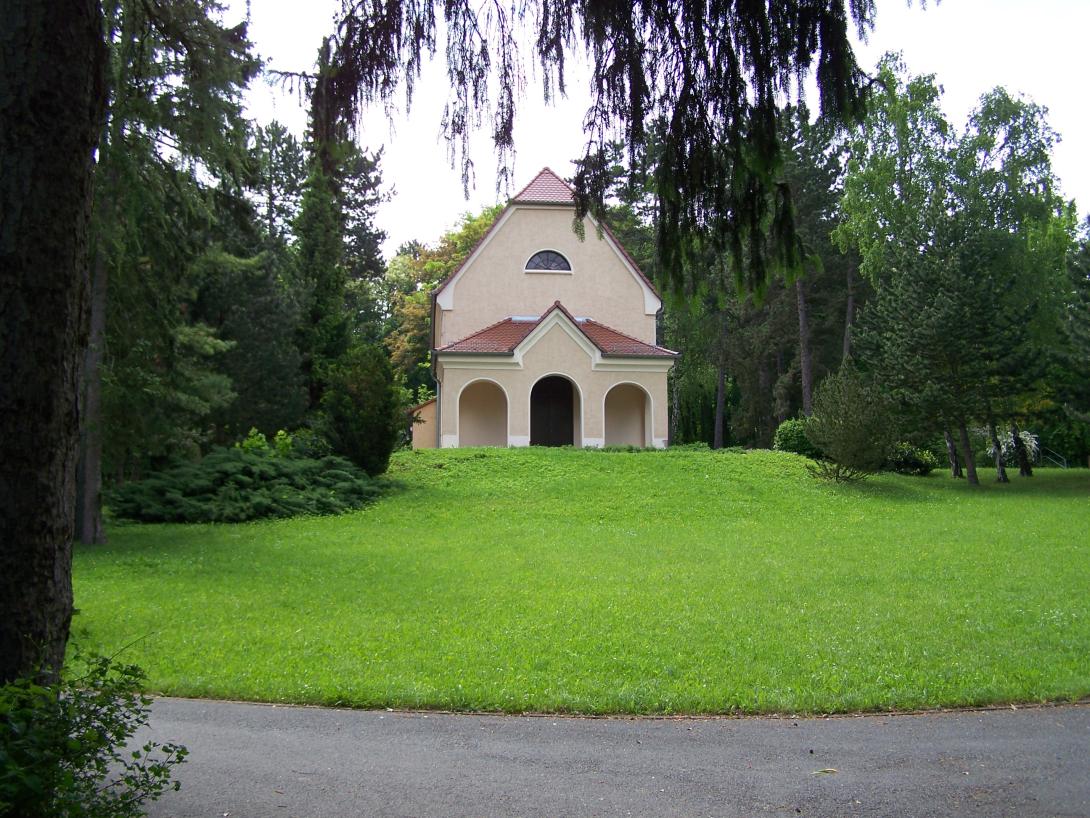
Location: Finkenweg
Accessibility by public transport: Line 14, Steinborn stop
Area of the cemetery: 2.22 ha
Number of gravesites: 1,150
the eastern cemetery was inaugurated in 1907.
The ceremony hall, built in 1908, has 47 seats and a separate farewell room. in 2002, the masonry was insulated and the interior renovated.
There are honorary graves at the Ostfriedhof for:
and war graves
Location: between Buchaer Straße and Ammerbacher Straße
Accessibility by public transportation: Line 12, Ammmerbach Ort stop
Area of the cemetery: 0.32 ha
Number of graves: 450
The cemetery, which was established in 1898 to the east of the district, has been extended four times and today serves as a burial site for urns for the residents of Ammerbach, Beutenberg, Ringwiese and Winzerla.
The small cemetery hall, built in 1902, forms the center of the cemetery with its clinker brickwork. One of the two water points is located in the immediate vicinity.
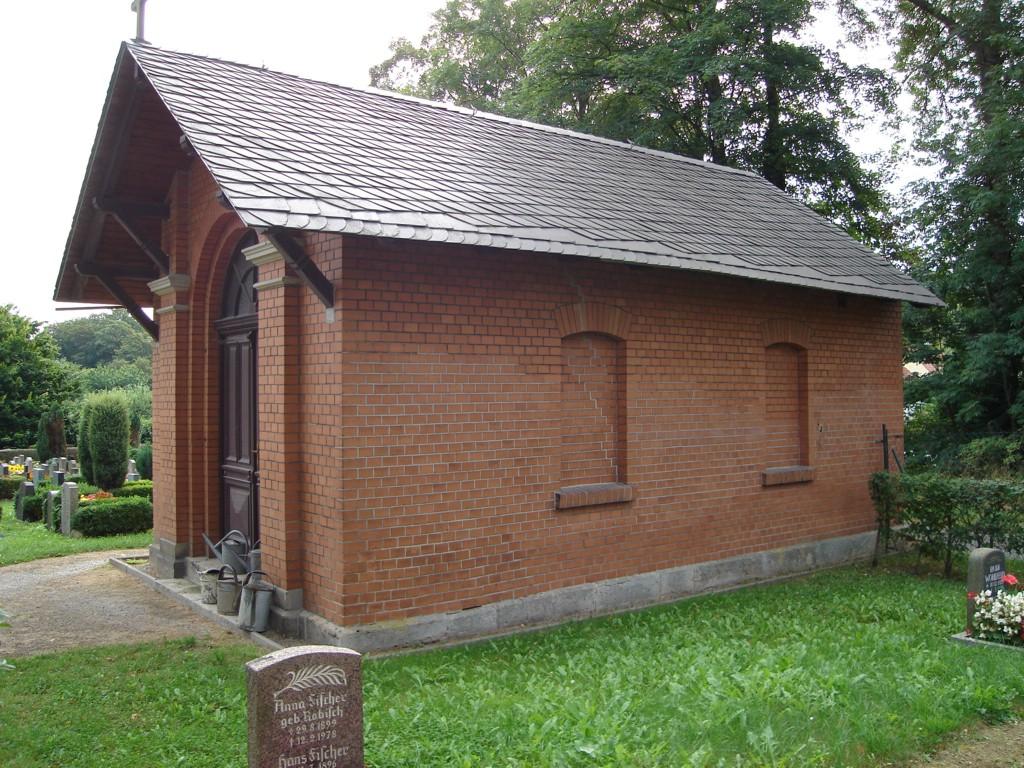
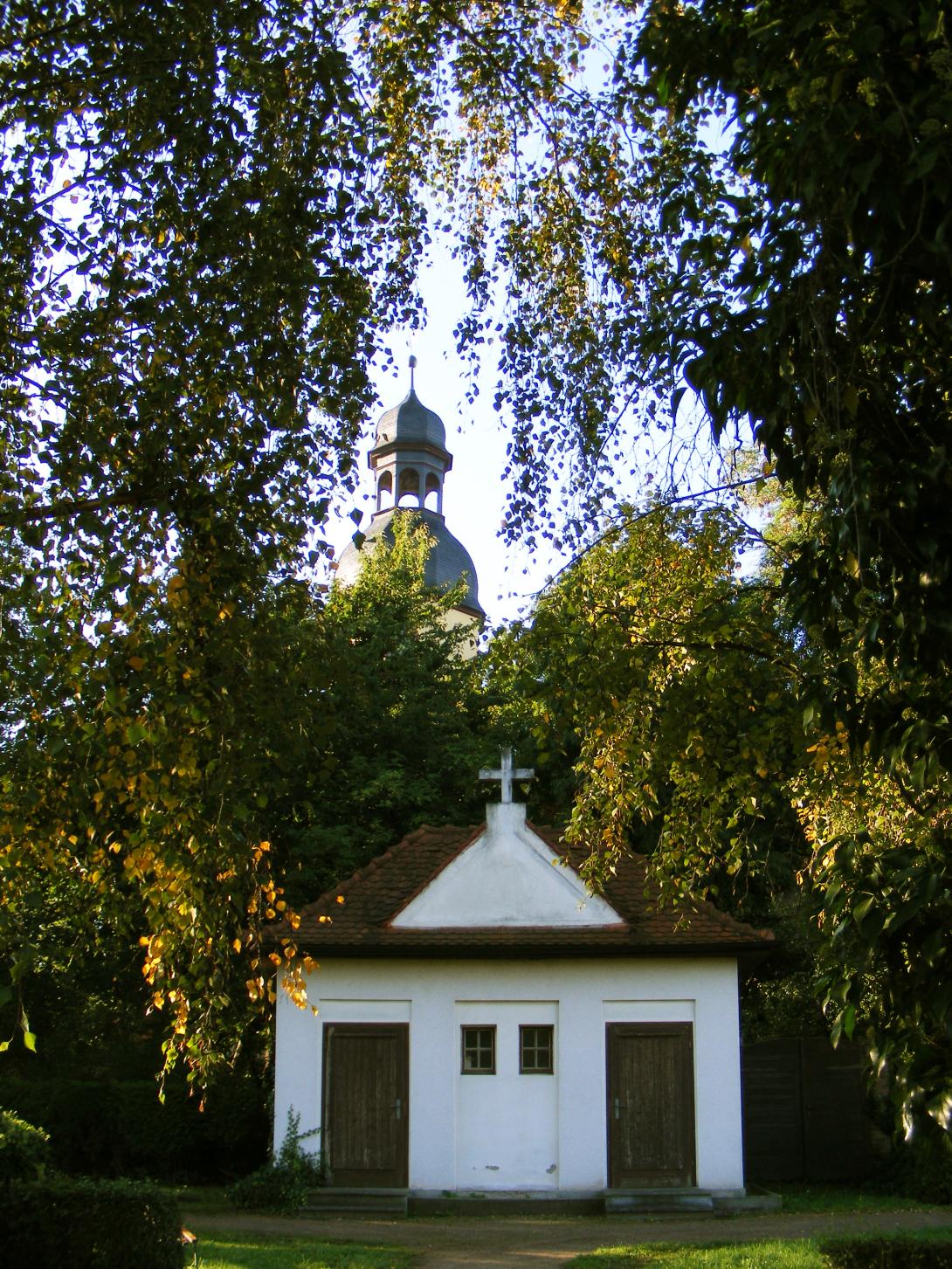
Location: between Göschwitzer Straße and Keßlerstraße
Accessibility by public transportation: Lines 3, 4, 5, 13, 34, 35, 41 Burgau stop
Area of the cemetery: 0.24 ha
Number of gravesites: 110
As the cemetery at the church was insufficient, a communal cemetery was opened in 1914 adjacent to the parish garden. A mortuary from 1920, which is no longer in use, is located on the side facing the church.
Location: Closewitz
The Closewitz cemetery is located at the entrance to the village, coming from the Rautal valley.
Accessibility by public transportation: Line 16 Cospeda stop
Area of the cemetery: 0.15 ha
Number of graves: 45
The simply furnished ceremony hall can be used and offers seating for 15 people.
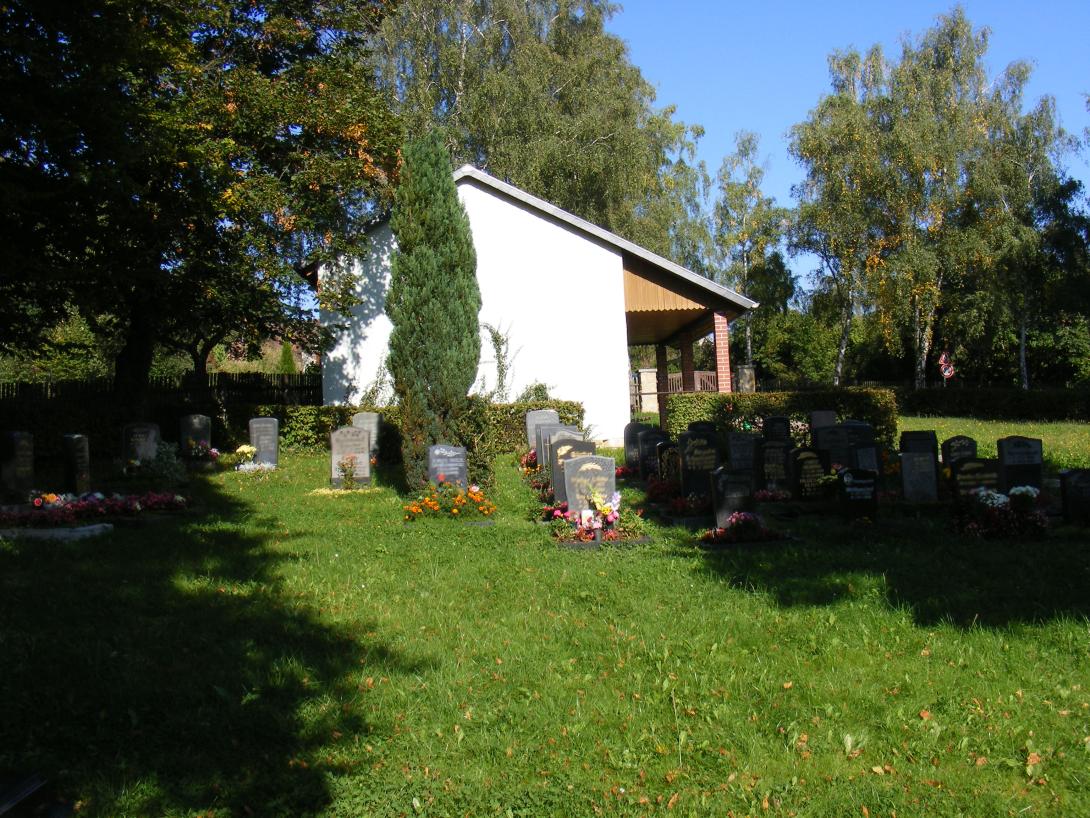

Location: Kirchgasse
Accessibility by public transportation: Line 16 Cospeda stop
Area of the cemetery: 0.06 ha
Number of gravesites: 45
Passing the church cemetery and the church, you reach the municipal cemetery. The watering place is also located here.
Location: At Goethepark
Accessibility by public transportation: Lines 3, 5, 34, 35 Richard-Sorge-Straße stop
Area of the cemetery: 0.06 ha
Number of gravesites: 25
The municipal cemetery is located in the immediate vicinity of Drackendorfer Park and next to the church. The cemetery is available for the burial of residents of the Drackendorf district.
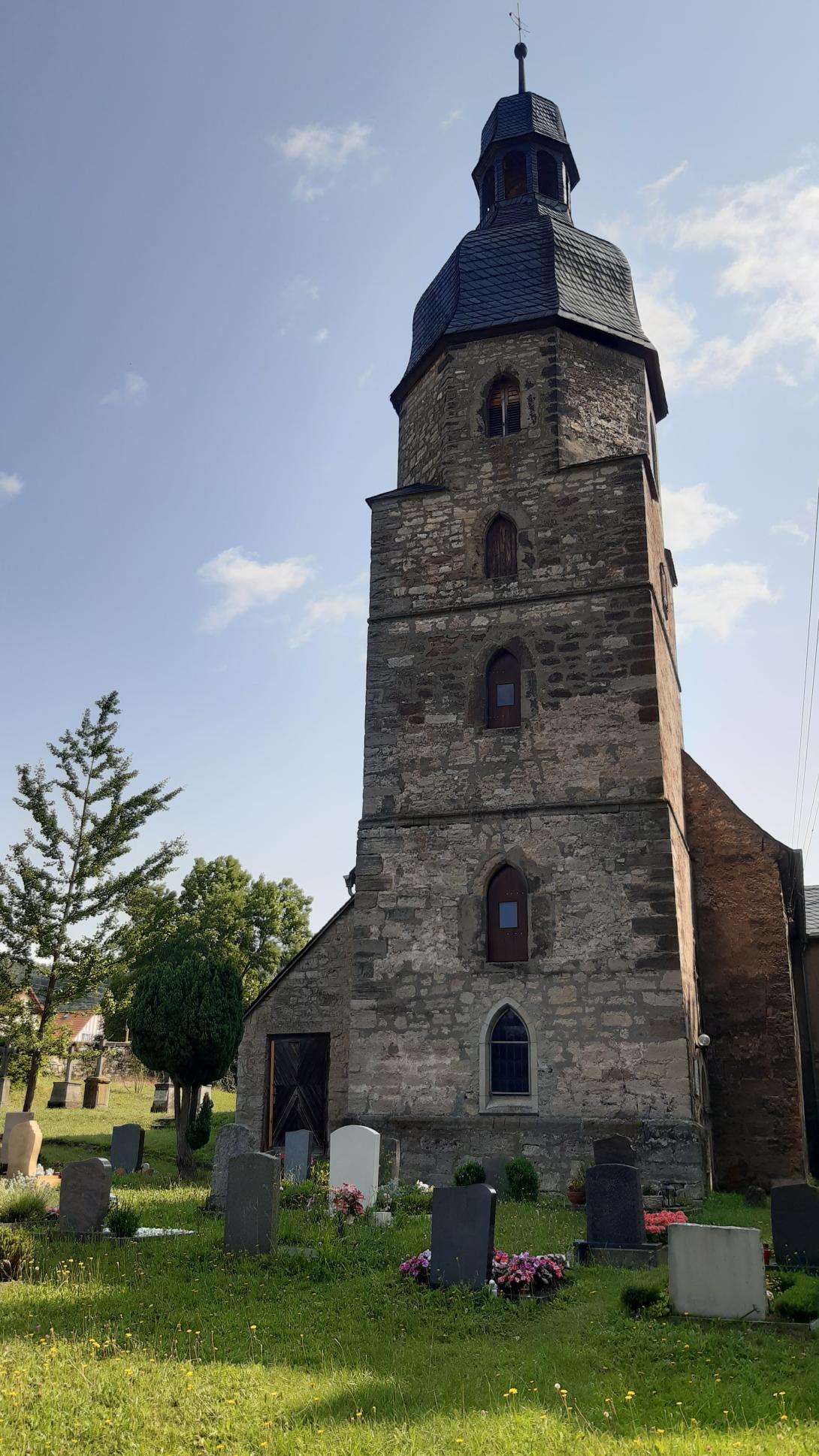

Location: Alte Hauptstraße
The cemetery is located on the north-western edge of the village in the middle of meadows.
Accessibility by public transportation: Lines 12, 13 Göschwitz Kirche stop
Area of the cemetery: 0.2 ha
Number of graves: 100
The 60 m² cemetery hall, built in 1906 from prefabricated reinforced concrete elements, is a listed building and can be used as such.
Location: Ilmnitzer Dorfstraße
The small municipal cemetery is located on a hill in the east of Ilmnitz.
Accessibility by public transportation: Line 443 Ilmnitz stop
Area of the cemetery: 0.02 ha
Number of gravesites: 20
This is the war grave of a 17-year-old soldier from the Second World War.

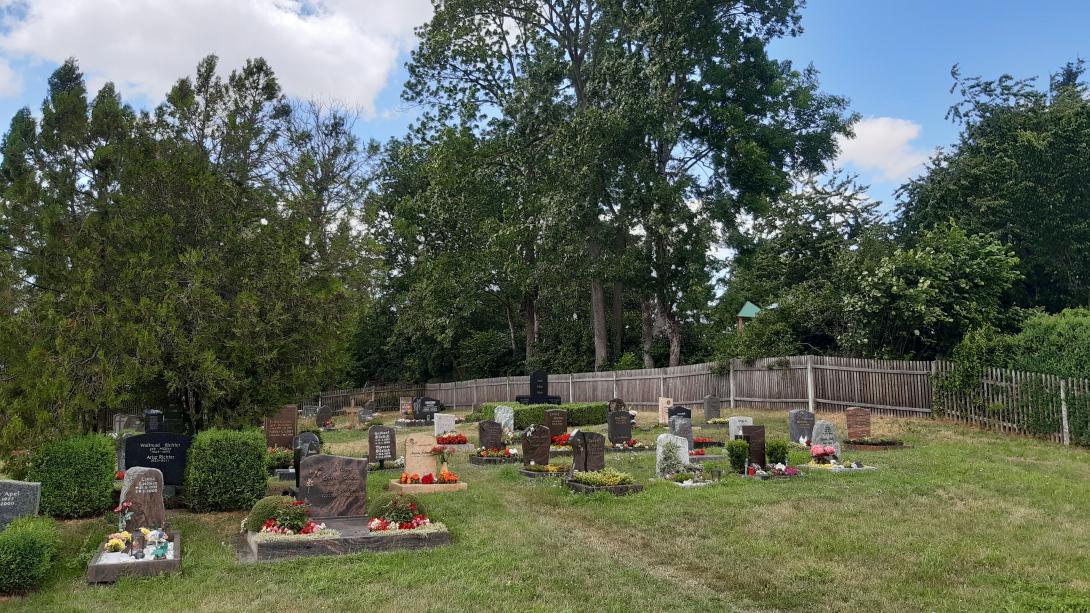
Location: Am Rasen
Accessibility by public transportation: Line 16 Isserstedt Ort stop
Area of the cemetery: 0.17 ha
Number of gravesites: 100
Grave sites worthy of protection: Hugo Becker and the Schunke family, the war grave of a soldier from the 2nd World War
Location: Dorfstraße, corner of Friedhofsweg
The cemetery is located on the western edge of the village.
Accessibility by public transportation: Line 431 Wogau stop
Area of the cemetery: 0.10 ha
Number of gravesites: 70
Location: Zur Windmühle
The cemetery is located on the northern edge of the village.
Accessibility by public transportation: Line 16 Krippendorf stop
Area of the cemetery: 0.15 ha
Number of gravesites: 30
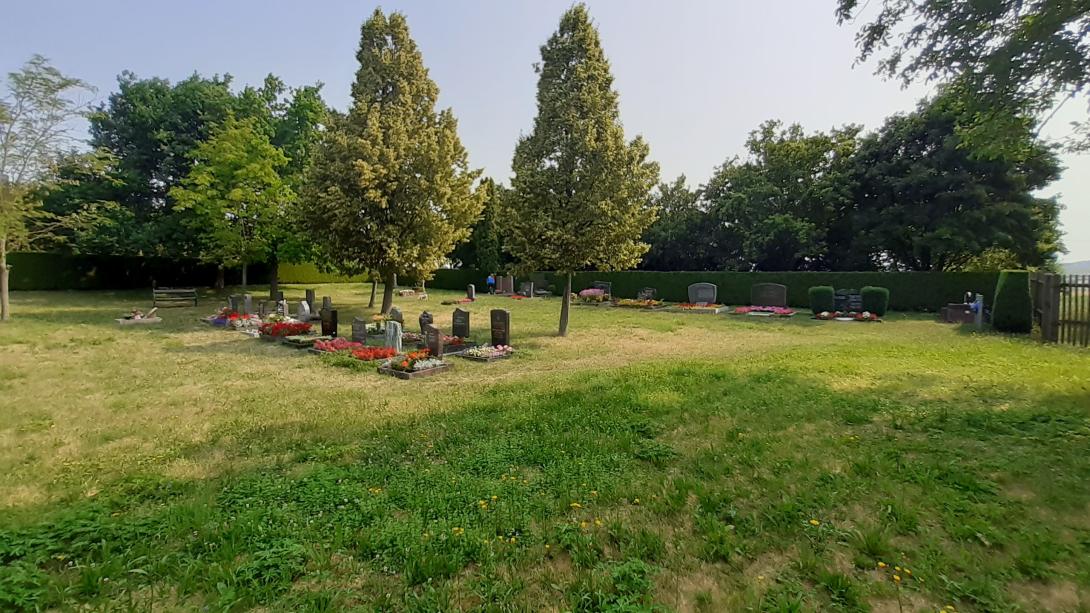

Location: Lichtenhainer Oberweg
Accessibility by public transportation: Lines 10, 11, 13 stop Fachhochschule or Hermann-Löns-Straße
Area of the cemetery: 0.45 ha
Number of gravesites: 230
The municipal cemetery, founded in 1882, already existed before the incorporation of Lichtenhain in 1913. Only the foundation walls of the cemetery hall built in 1898 remain.
The Zeiss industrial building 6/70, which was completed in the neighborhood in 1972, dominates the appearance of the cemetery.
Location: At the cemetery
Accessibility by public transportation: Lines 4, 5, 34 Lobeda stop
Area of the cemetery: 0.53 ha
Number of gravesites: 1000
The cemetery was used from 1891. Shady 120-year-old lime trees stand by the wayside cross.
The 36 m² worship room of the ceremonial hall, built in 1911, is still used today for simple funeral services.
The oldest remaining grave is that of Friedrich Herdrich from 1891.
A memorial designed by the architects Schreiter and Schlag was dedicated in 1928 to commemorate the fallen of the First World War. War graves of 18 victims of the Second World War can be found in the cemetery.
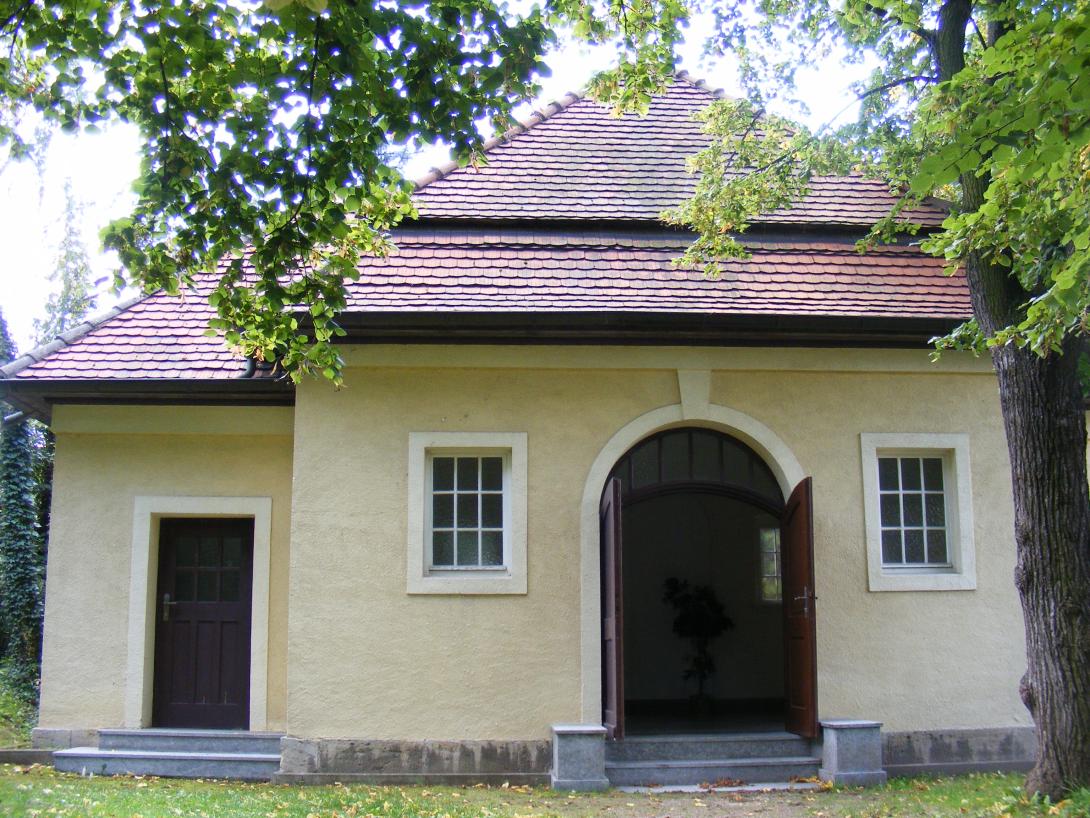
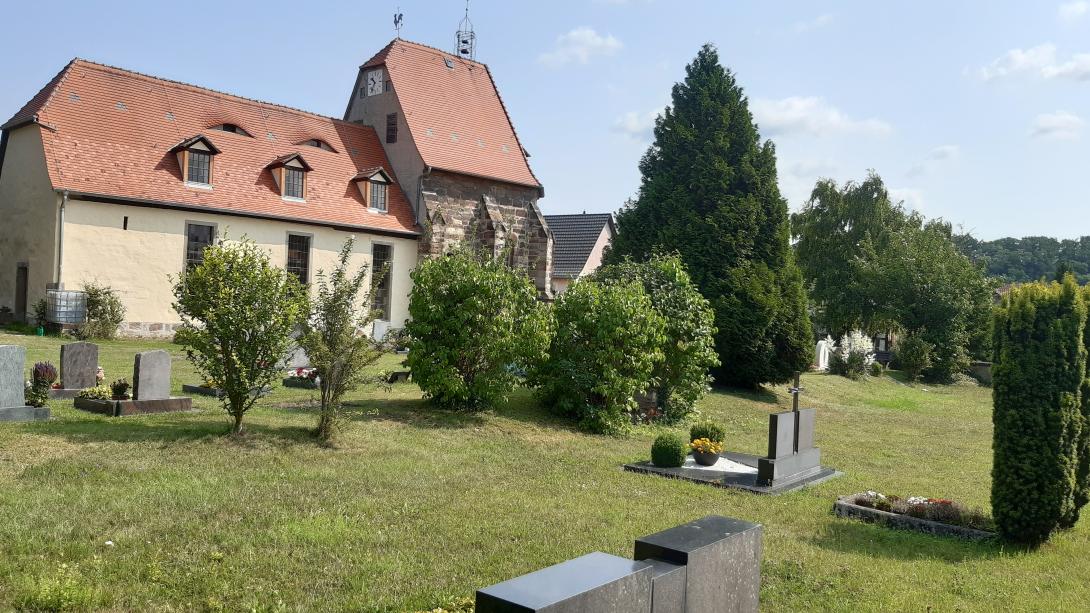
Location: At the cemetery
Accessibility by public transportation: Line 13 Maua stop
Area of the cemetery: 0.07 ha
Number of gravesites: 10
The communal cemetery is located directly next to the church and adjacent to the church cemetery at the no longer used celebration hall.
Location: Münchenrodaer Straße
Accessibility by public transportation: Line 18 shared cab, stop Lucas-Cranach-Allee
Area of the cemetery: 0.25 ha
Number of gravesites: 40
The cemetery is located between the new residential area and the original site.

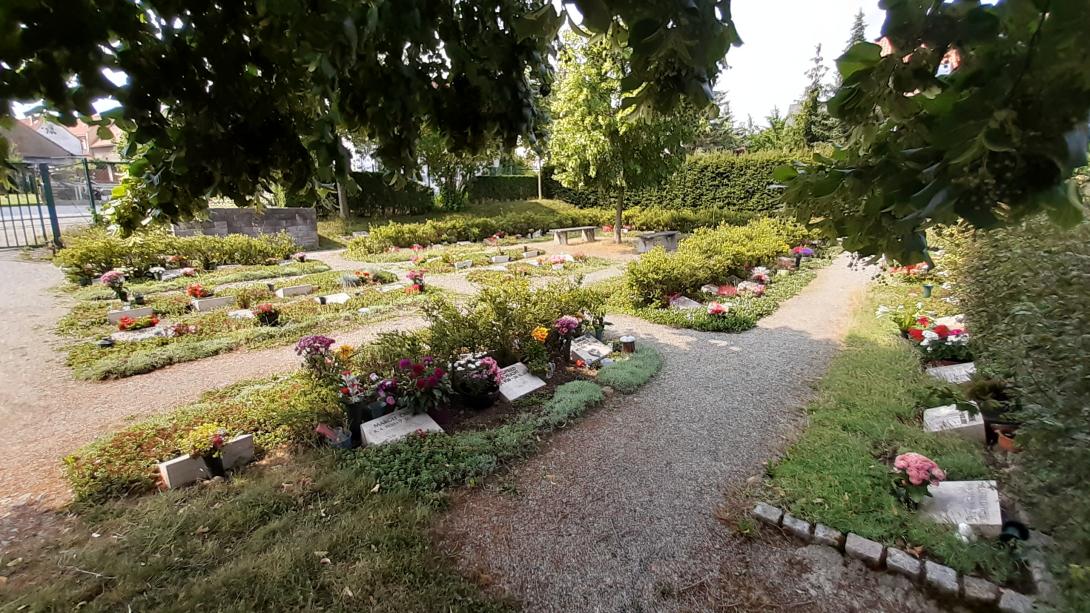
Location: Friedensweg
Accessibility by public transportation: Line 12, 13 Winzergasse stop
Area of the cemetery: 0.22 ha
Number of gravesites: 340
Location: Wilhelm-Hauff-Weg
Accessibility by public transportation: Line 431 Wogau stop
Area of the cemetery: 0.09 ha
Number of gravesites: 50
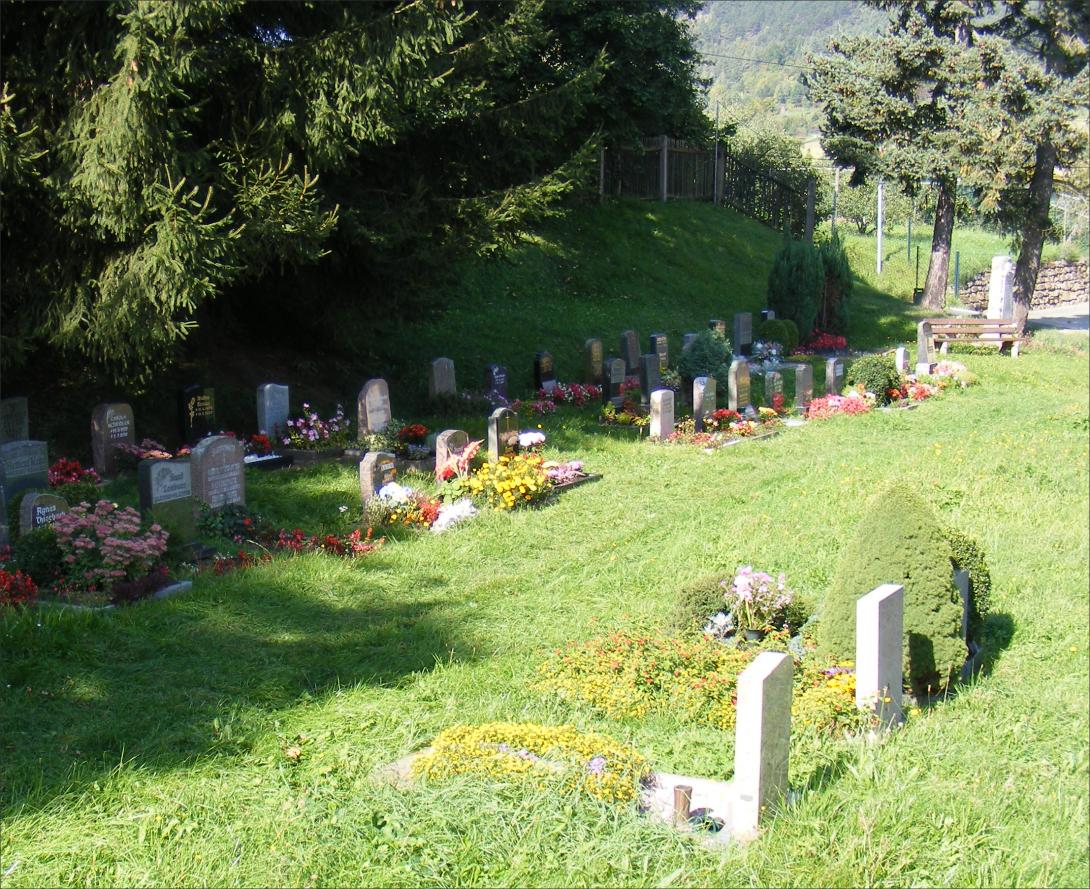
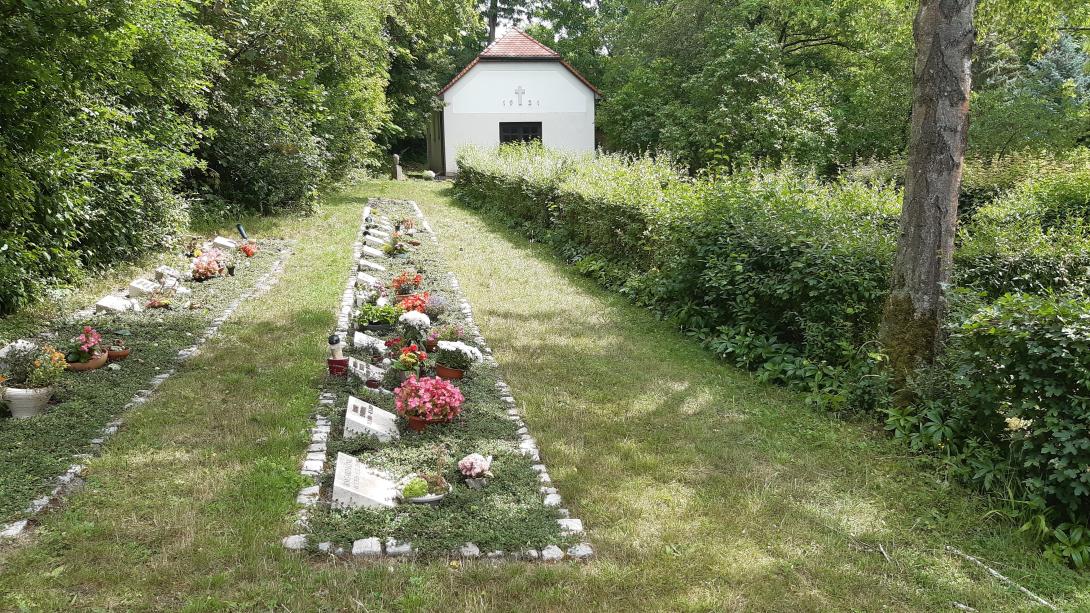
Location: In the Krähmer, at the end of the village at the entrance to the Pennicken valley
Accessibility by public transportation: Line 41, 431, 443 Wöllnitz stop
Area of the cemetery: 0.25 ha
Number of gravesites: 70
The ceremony hall, built in 1921, is still used today for simple funeral services.
Location: Grundweg
Accessibility by public transportation: Line 16, stop Ziegenhainer Tal, call cab Ziegenhain
Area of the cemetery: 0.22 ha
Number of gravesites: 160
The cemetery was established in 1856 and is the oldest municipal cemetery in Jena. After the renovation of the cemetery hall, which was built in 1921, in 1998, it can once again be used as a mourning hall.
The burial site of honorary citizen Albert Heintz is also located here.
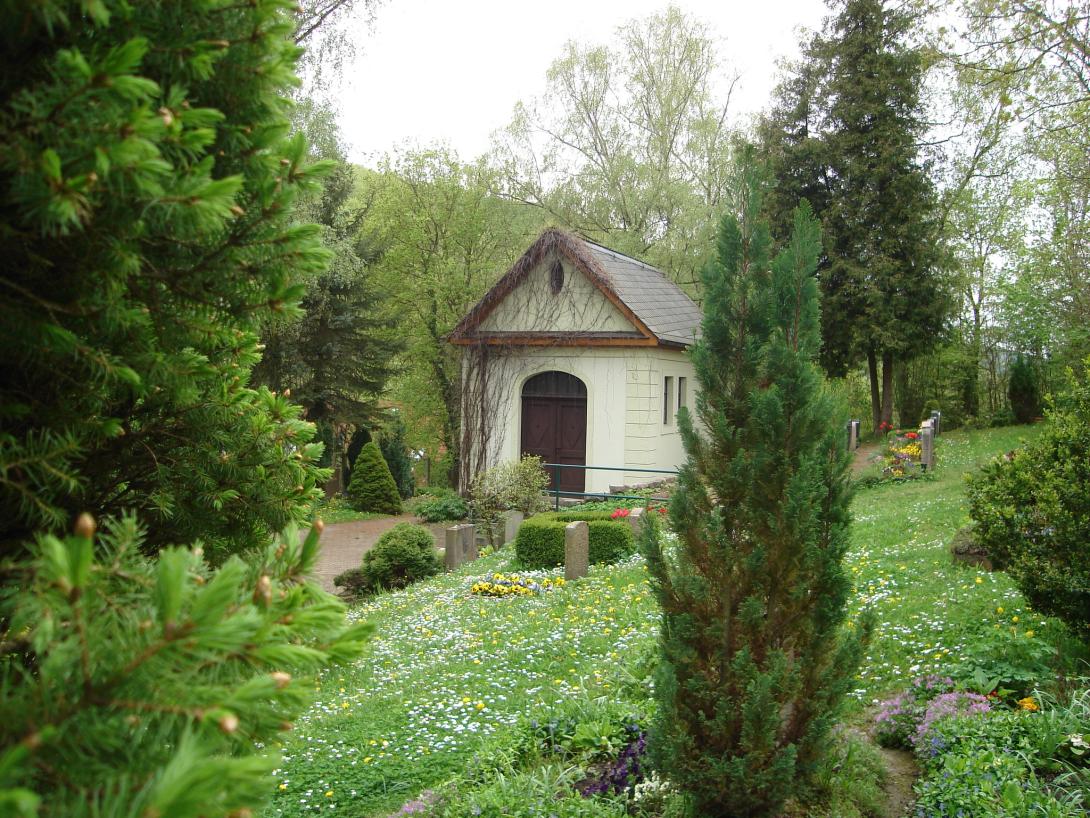
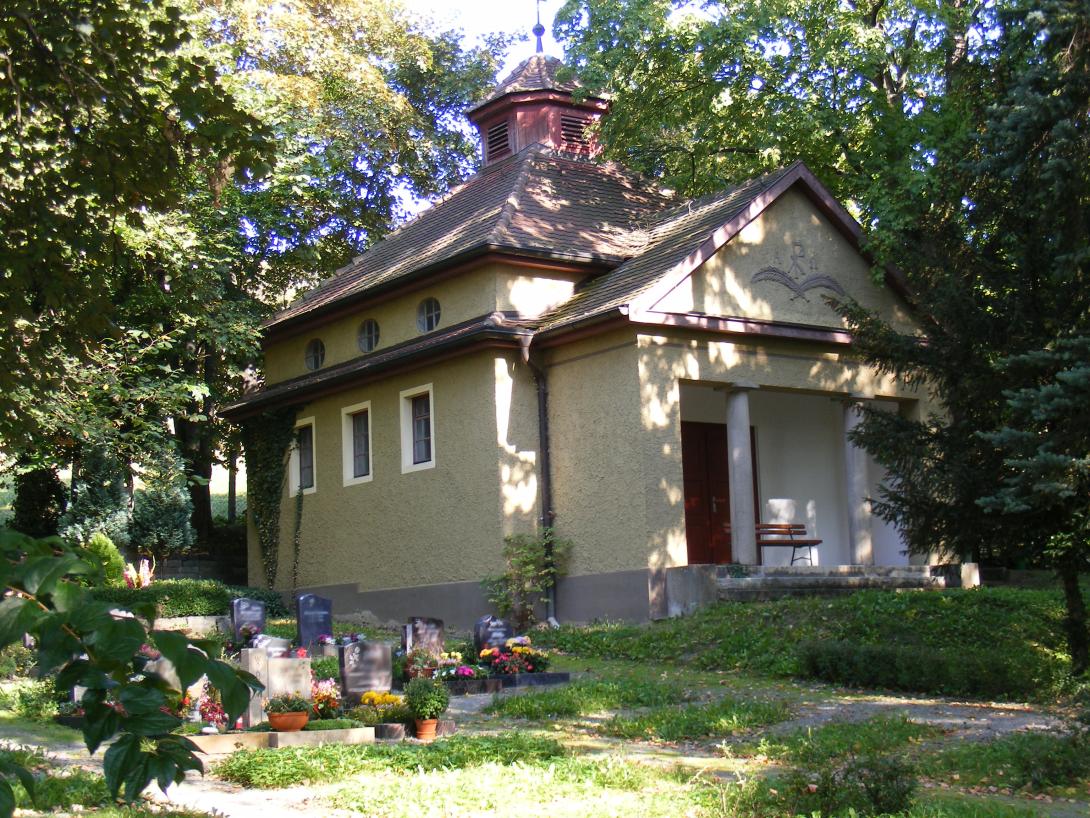
Location: Kreuzgasse
Accessibility by public transportation: Lines 1, 4, 34 Zwätzen Schleife stop
Area of the cemetery: 0.28 ha
Number of gravesites: 150
The cemetery has existed since 1895 and a cemetery hall was built in 1912.
Opening hours
Mon 08:00-12:00, 13:00-15:00
Tue, Wed 08:00-12:00
Thu 08:00-12:00, 13:00-17:00
Fri 08:00-11:00
To avoid waiting times, please make an appointment in advance by telephone.